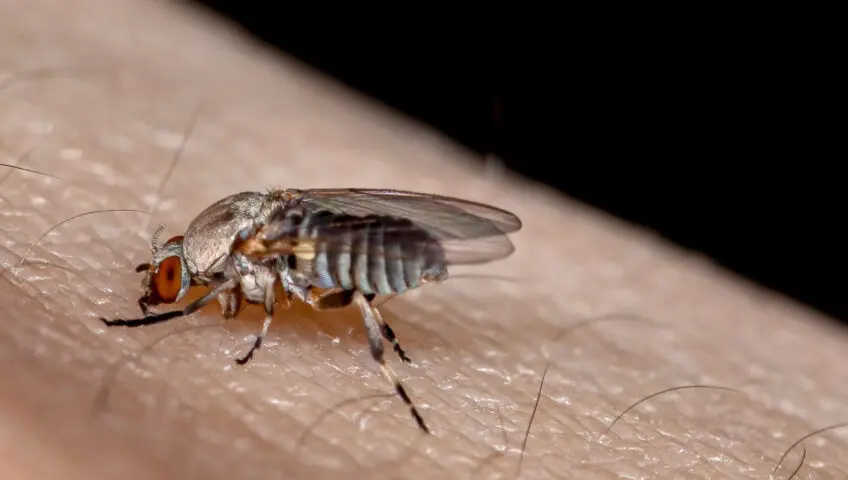While we enjoy outdoor activities here in Florida, there are tiny tormentors that can put a damper on our fun. Their bites not only hurt, but often cause redness and itching. But have you ever wondered why biting flies seem to have a particular taste for humans?
The biology of biting flies
Biting flies – a group of insects that includes deer flies, horseflies, black flies and biting midges – are notorious pests. These insects are equipped with specialized mouthparts designed for piercing and sucking. They’re looking for a blood meal, some to facilitate reproduction, and that’s where we come into the picture.
Attracted by carbon dioxide, heat
One of the primary reasons biting flies locate humans is our exhalation of carbon dioxide. When we breathe, we release the gas into the air. Biting flies are sensitive to it, which helps them zero in on hosts to bite.
Biting flies are excellent at detecting temperature gradients, too. They are drawn to warm-blooded animals because the heat signifies a potential blood source. This is why they often bite exposed areas of our skin, such as ankles, arms and neck.
Body odor and chemicals
In addition, our bodies produce various chemicals and odors, some of which attract biting flies. They are particularly attracted to the scent of sweat, body odor and certain chemicals found in our skin. These odorous cues guide them towards their next meal.
Blood type matters
Believe it or not, your blood type may influence whether you’re more or less appealing to biting flies. Some research suggests that people with certain types are more attractive to these insects than others. According to studies in 2004 and 2019, for example, type O blood appears to draw mosquitoes to their hosts more readily than other types.
Conclusion
So, why do biting flies bite people? It’s all about survival and reproduction. Biting flies detect the various cues we emit, making us an ideal target for their blood-sucking needs. While these insects can be a nuisance during outdoor activities, understanding their attraction to us can help us take preventive measures.
To minimize encounters with biting flies, it’s a good idea to wear light-colored, long-sleeved clothing (bright clothing can catch their attention), use insect repellents and avoid peak biting times such as dawn or dusk. By knowing what makes us appealing to these insects, we can enjoy the great outdoors with fewer interruptions from these tiny but persistent pests.
To find out more about pests and what to do about them, check out the Slug-A-Bug website at slugabug.com.
For more information:
https://www.medicalnewstoday.com/articles/326125
https://edis.ifas.ufl.edu/publication/IG081
https://www.wesh.com/article/midges-problem-sanford/43921597
https://www.aboutbugz.com/what-attracts-sand-flies-to-humans/
https://www.cnet.com/health/mosquito-magnets-how-blood-type-and-other-factors-make-you-a-target/
